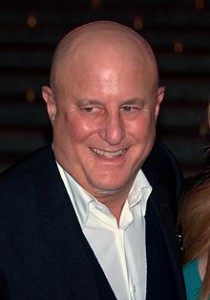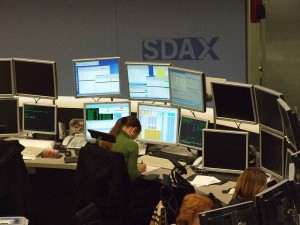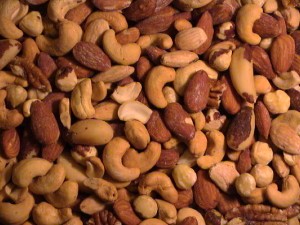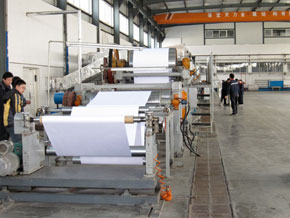Harland Clarke Bonds – A High Yield Opportunity
M & F Worldwide is a company that has come across my screens many times in the past, but I never could bring myself to write about it. The company was taken private last September by the well-known takeover artist Ron Perelman, and unfortunately for me, I’m not on record as saying it is an attractive opportunity. However, I recently discovered that the bonds of the company’s main subsidiary, Harland Clarke, represent a similarly attractive opportunity.
 There are two series of bonds outstanding, one that pays LIBOR plus 4.75%, or 6% whichever is higher, and an ordinary fixed rate bond that pays 9.5%. The floating rate bond currently sells for 68.50, while the fixed rate is at 80.25, with a yield to maturity of 18.5%, a current yield of 12%, and a yield assuming no reinvestment of 14.9%. Both bond series fall due in 2015. About $300 million of each series of bonds were issued, but thanks to buybacks there are $202 million of the floating rate bonds and $271 million of the fixed rate bonds outstanding.
There are two series of bonds outstanding, one that pays LIBOR plus 4.75%, or 6% whichever is higher, and an ordinary fixed rate bond that pays 9.5%. The floating rate bond currently sells for 68.50, while the fixed rate is at 80.25, with a yield to maturity of 18.5%, a current yield of 12%, and a yield assuming no reinvestment of 14.9%. Both bond series fall due in 2015. About $300 million of each series of bonds were issued, but thanks to buybacks there are $202 million of the floating rate bonds and $271 million of the fixed rate bonds outstanding.
These bonds rank in priority behind a $1.7 billion credit facility which falls due in 2014, and which will have to be renegotiated then. The credit facility currently has an interest rate of LIBOR plus 2.5%, or the prime rate plus 1.5%, or the federal funds rate plus 2%, whichever is lowest. Obviously, based on the current bond yields the interest rate is likely to come up in 2014, and the uncertainty surrounding this is no doubt a contributor to the high yields on the bonds.
Harland Clarke is the main operating asset of M & F Worldwide, the other, much smaller piece being a producer of licorice flavoring for tobacco. Harland Clarke mainly produces checks and business forms and stationery. The company also operates a financial solutions segment that facilitates financial applications and online transactions, as well as Scantron products and an associated suite of educational testing and grade management applications. The latter two segments each contributed 17% to total sales in fiscal year 2011. Obviously, the printing industry is in a decline and undergoing consolidation, as I have stated in my other articles about RR Donnelley and Deluxe Corp, and this fact is no doubt another influence on the high yield. However, although the businesses are declining they are spinning off a lot of free cash flow along the way. Harland Clarke has been focusing more on expanding its lines of business through complementary acquisitions, unlike RR Donnelley, which is focusing on consolidation.
The acquisition price that Ron Perelman paid, which implied a value of roughly $450 million for the entire company, is dwarfed by the roughly $2.25 billion in debt, but the involvement of a talented takeover artist is a vote of confidence in the company’s future. Furthermore, at current valuation levels even assigning a normal interest rate to the company’s debt, interest would be adequately covered.
Turning now to the figures, in fiscal year 2010, sales were $1.671 billion, reported operating income was $297 million, asset impairments were $3 million, and excess depreciation was $126 million, producing operating cash flow of $426 million. Interest expense that year was $116 million, but even if interest was a more realistic $200 million it would be covered more than twice.
In 2009, sales were $1.712 million, operating income was $250 million, asset impairments were $44 million, excess depreciation was $137 million, producing operating cash flow of $421 million.
In 2008, sales were $1.795 million, operating income was $265 million, asset impairments were $2 million, excess depreciation was $124 million, producing operating cash flow of $391 million.
2011 is somewhat weaker than 2010; setting aside a change in contingent liabilities which is probably nonrecurring, the first three quarters of 2011 produced free cash flow of $278 million, which would be $371 million on a full year basis, as compared to $329 million for the first three quarters of 2010. However, $24.3 million of this diminution of income was the result of acquisition costs, including deferral of revenue.
The company has also taken restructuring charges, which normally one would treat as nonrecurring, but the business has been in restructuring mode for years and probably will continue to be for the foreseeable future, so I would not be inclined to treat them as nonrecurring or even noncore.
One mode of analysis is to start with the bankruptcy and work our way backwards, an approach suggested in many guides to distressed debt investing, including Distress Investing: Principles and Technique by veteran bankruptcy investor Martin Whitman. So, if we allow $350 million in cash flow per year, and rewrite the capital structure to provide an interest coverage ratio of 3, this gives us roughly $120 million per year in interest payments. Capitalize that at 9% and you get $1.33 billion in supported debt. The remaining $230 million, after estimated taxes, produces $138 million per year. Capitalized at a multiple of 8x, this is an additional $1.1 billion, so there is a total of $2.43 billion even under these conservative assumptions. Assuming, quite reasonably, that the secured credit facility must be fully satisfied before the bonds must be paid, that still leaves $710 million in value to satisfy a pair of bond issues that collectively sell for $357 million.
Even if we assume that the senior credit facility would want to take all debt and no equity, $1.72 billion charging 10% in interest would cost $172 million a year. Subtract that from $350 million in pretax free cash flow to firm leaves $178 million, or $107 million before estimated taxes. Capitalize that at 6x (for the lower interest coverage) and that still leaves $642 million, again stacking up nicely against the current price of the bonds.
The question, though, is whether that Chapter 11-style restructuring will be reached, and the key question in that determination would be the involvement of Ron Perelman. As I’ve said, the involvement of an experienced takeover expert is a vote of confidence in the company’s future, and in fact he is unlikely to risk his equity investment through risking bankruptcy. In fact, he has ridden to the rescue of Revlon, one of his major investees, in fairly recent history by lending it the money to pay off the principal of its loans as they fall due. Of course, the interest rate he charged was exorbitant, but from the perspective of a creditor who has been paid back, that is of no concern. On the other hand, the last reported balance sheet of Harland Clarke showed $205 million on the balance sheet, and Perelman may have designs on it, although there are probably covenants in place protecting it. On the whole, though, I can say that Perelman’s involvement is positive or at least neutral.
As a result, I can say that despite the declining volume of check printing, the bonds of Harland Clarke are in a stronger position than their current prices would imply. As a result I can recommend them as a candidate for consideration for high yield debt buyers.




